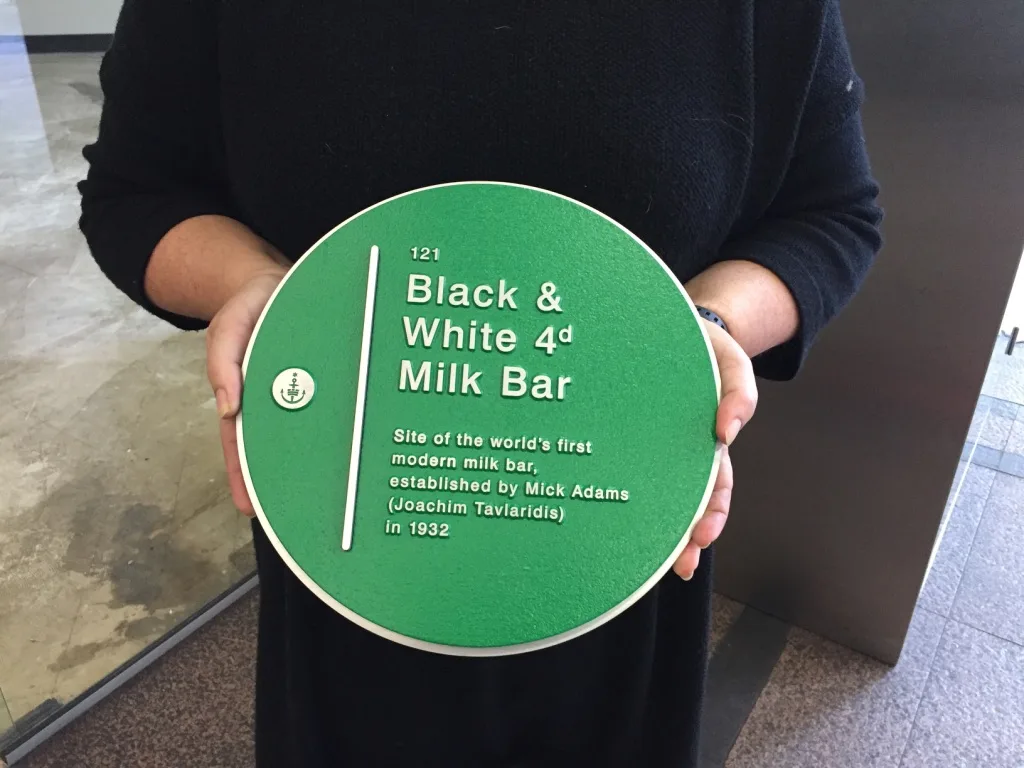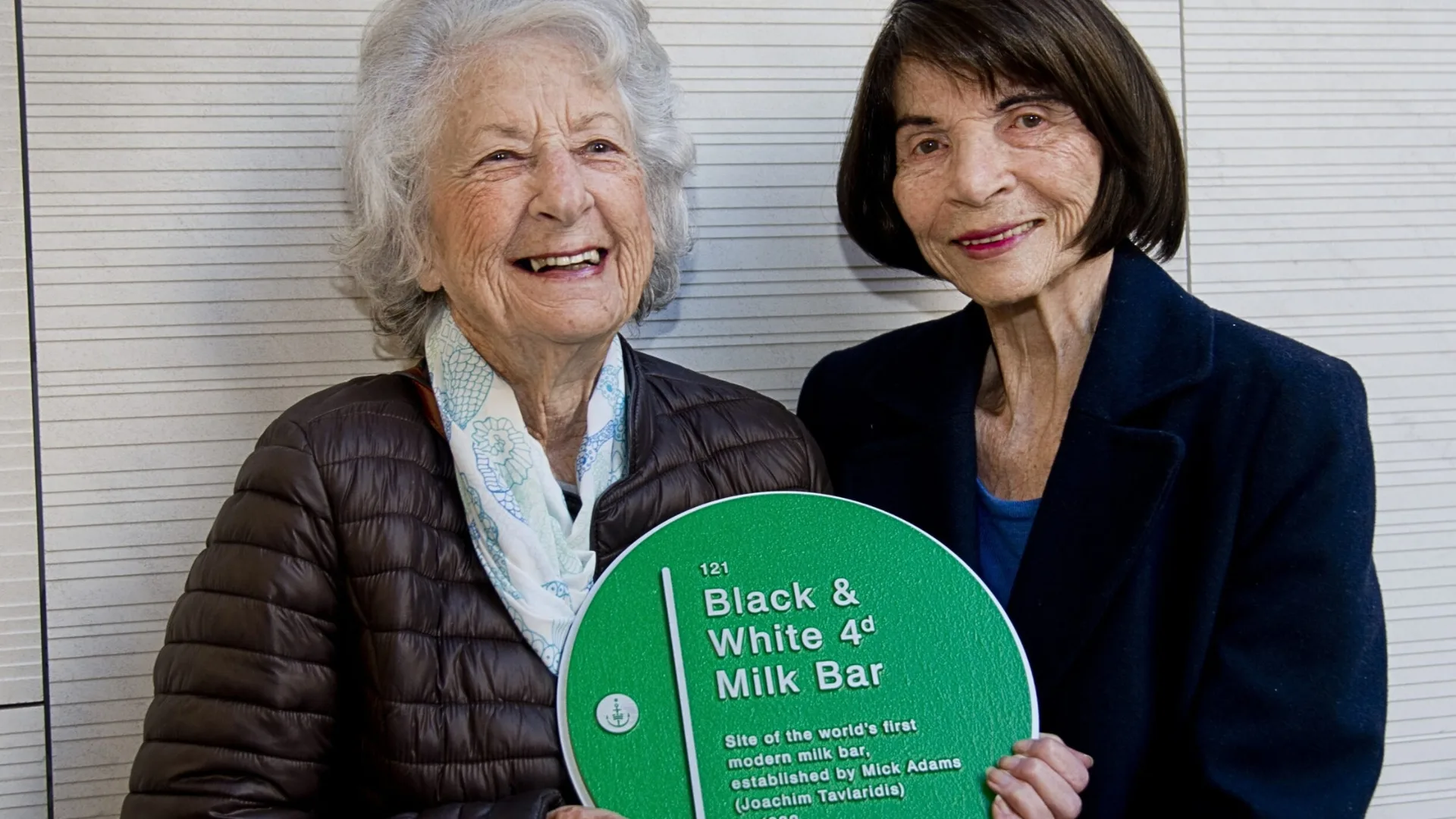The placement of a Green Plaque in recognition of Greek Australian Mick Adams’ (Joachim Tavarlidis’) achievement in establishing the world’s first modern milk bar – the Black & White 4d. Milk Bar at 24 Martin Place, Sydney – is to be formally undertaken.
The plaque unveiling comes after seven long years of campaigning by researchers Leonard Janiszewski and Effy Alexakis from Macquarie University, together with descendants of Mick, and representatives of Sydney’s Greek community.
Back in 2017, Mr Janiszewski and Ms Alexakis applied to the City of Sydney’s historical ‘green plaques’ program to have the site of milk bar officially recognised for its cultural and historical significance. The Council’s historical office reviewed the application and approved the recommendation for a plaque to be produced.

The city’s Lord Mayor, Clover Moore, also indicated in a letter to Mr Janiszewski and Ms Alexakis that she appreciated their “wish to commemorate this fascinating part of Sydney’s history, especially during the lifetime of Mick Adams’ daughters” and that “the City’s history team would be supportive of a site-specific interpretation in this location [24 Martin Place].”
However, the new owners of the site would not agree to the plaque being placed on their building, which is now the ANZ tower in Sydney.
For seven years, the researchers and Mick’s descendants called on the Council to provide a solution for where to place the historical plaque. Over that time, Mick’s daughters Lilian Keldoulis and Helen Gerondis have passed away.
Today, the plaque is not to be placed on the actual site of the milk bar, but further east, as a compromise.
Mr Janiszewski said now is a time to celebrate as the plaque will finally be unveiled as “public recognition of a Greek migrant-settler’s business acumen that became an iconic, Australian popular cultural symbol that was exported to the world.”
The milkshake was revolutionised by Adams’ modern milk bar and his milk bar concept spread rapidly throughout the nation (by 1937 there were 4,000 registered) and it was then swiftly exported to Great Britain, Europe, New Zealand, South Africa, South Pacific Islands and Japan.
